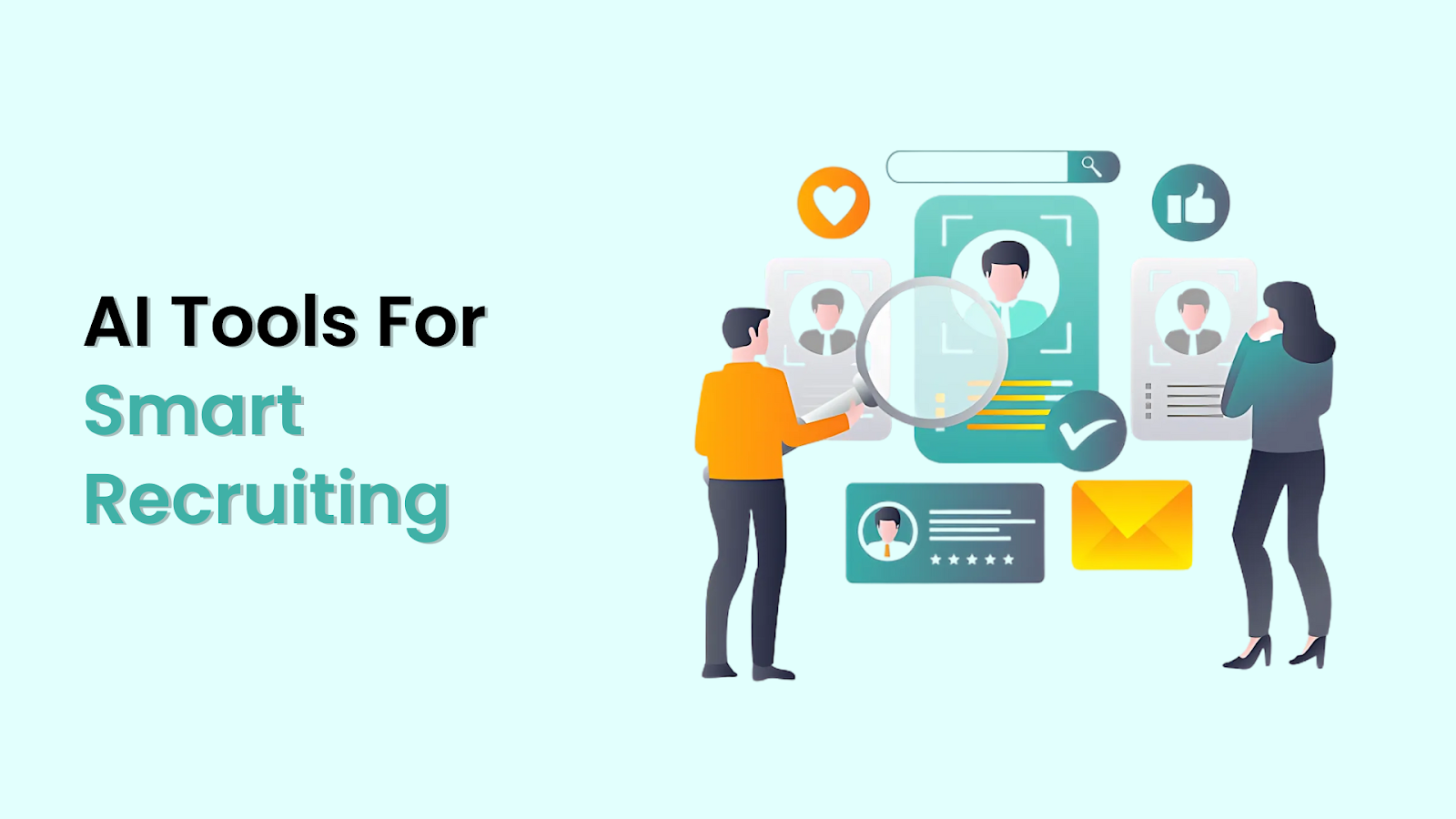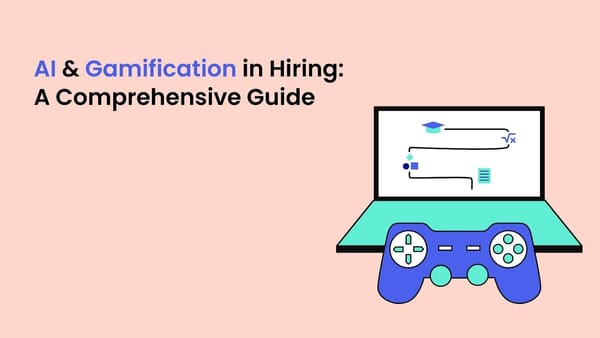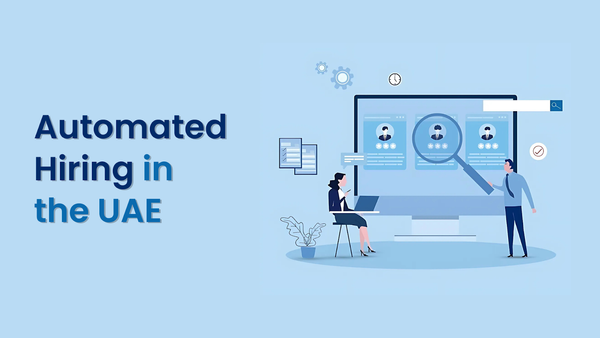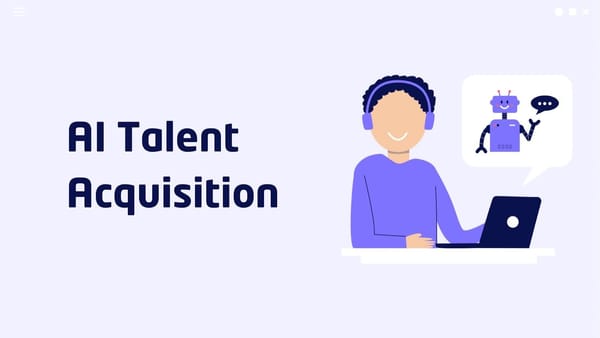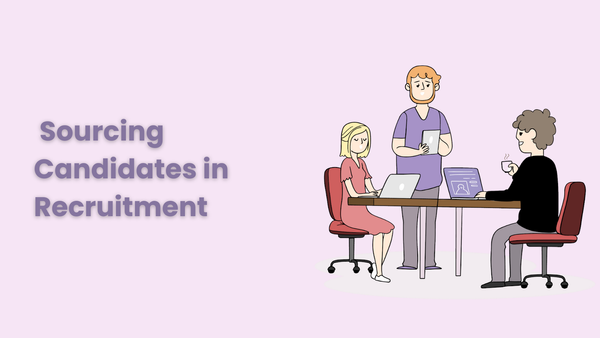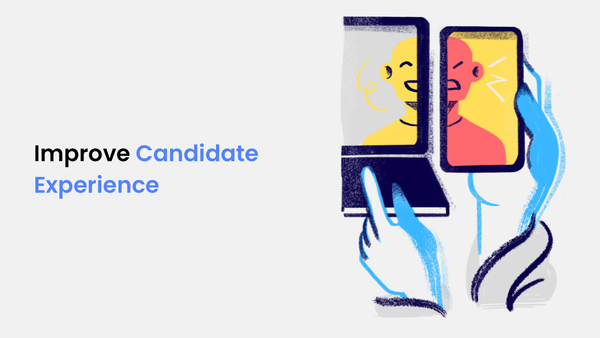Are manual hiring tasks slowing your team down and letting top candidates slip away? Finding the right talent often feels like searching for a needle in a haystack. Smart recruiting tools simplify sourcing, screening, and candidate engagement, helping you hire faster and more efficiently.
The right platform can handle repetitive tasks, streamline candidate communications, and free up your team for strategic hiring decisions. But with so many options available, how do you choose the one that truly fits your needs?
Our guide brings you the best AI recruitment tools along with their ratings, pros, and cons to make your decision easier. Let’s explore!
Quick Summary
- AI recruiting tools help streamline hiring by automating tasks like sourcing, screening, and engagement.
- Tidyhire, Eightfold, and Paradox lead the way with intelligent automation and candidate engagement.
- When selecting a platform, evaluate core functionalities, extra features, usability, and support.
- Implementing AI recruiting software requires careful planning, integration with existing systems, and thorough user training.
What Makes A Good AI Recruiting Tool?
Choosing the right AI recruiting software starts with understanding what truly matters in your hiring process. The best solutions are built for recruiters from the ground up, not adapted from generic HR platforms. Key elements include:
- Built specifically for recruitment rather than added onto a generic HR system.
- Uses AI for resume screening, candidate matching, and interview scheduling.
- Works independently while fitting smoothly into your existing workflow.
- Allows you to customise hiring steps to match your process.
- Connects easily with other software for better data flow and automation.
Also Read: Understanding AI in the Recruiting Process
What Are The Types Of AI Recruiting Tools?
Before investing in AI recruiting tools, understand the main types and where they fit in your hiring process. Each serves a specific role, helping you source, assess, and engage candidates more effectively.
- Applicant Tracking Systems (ATS): Keep all applications in one place, track candidates easily, and see exactly where they are in your pipeline.
- Job Aggregators and Recruitment Platforms: Share your job openings across multiple sites so more qualified people see and apply.
- Job Description and Feedback Tools: Help you write clear, engaging job posts and collect structured feedback after interviews.
- Chatbots and Candidate Engagement Tools: Answer candidate questions instantly and keep them updated without endless back-and-forth emails.
- Screening and Skills Assessment Tools: Quickly test skills or qualifications so you focus only on the most promising applicants.
- Video Interview Platforms: Make remote hiring simpler by letting you conduct and review interviews anytime, anywhere.
Top 10 AI Recruitment Tools You Should Know
Check the top 10 smart recruiting tools to use in 2025. These solutions boost efficiency and improve your chances of finding the right talent.
Quick Comparison
1. Tidyhire
Tidyhire is an AI-powered recruitment platform that helps you manage outbound hiring from start to finish. It provides access to over 700 million profiles across 30+ sources, giving you a strong base for sourcing talent. Its Recruiting Intelligence Agent (RIA) automates repetitive tasks, allowing you to focus on candidate relationships and strategy.
You get hyper-personalised communication, omnichannel outreach across voice, SMS, WhatsApp, and email, plus integrations with Slack, Microsoft Teams, and 300+ workflow tools. Real-time insights and daily reports keep you updated, while in-built proctoring adds security for interviews.
Pros:
- Automates sourcing, communication, and follow-ups.
- Integrates with 300+ ATS, CRM, and workflow tools.
- Supports multi-channel outreach for wider reach.
Cons:
- Outbound focus may not suit every hiring strategy.
- Requires initial setup time for workflows.
2. Eightfold.ai
Eightfold.ai focuses on intelligent talent acquisition. It matches candidates based on skills, capabilities, and real-time context instead of only CV keywords. This approach helps you find talent overlooked by traditional methods.
Its Talent Intelligence Platform supports both external hiring and internal mobility. You can upskill employees, redeploy talent, and guide team members towards roles that align with business needs. This balance of external and internal capabilities makes it one of the more versatile smart recruiting tools.
Pros:
- Matches talent using skills and potential.
- Strong internal mobility and upskilling features.
- Suitable for large-scale hiring campaigns.
Cons:
- Effectiveness depends on input data quality.
- The platform can be slow during heavy usage.
3. Paradox
Paradox’s standout feature is Olivia, its AI recruitment chatbot, built to engage candidates at scale. It can handle screening, interview scheduling, and repetitive candidate queries, reducing admin work for your team.
Alongside Olivia, Paradox offers conversational ATS, CRM, and career sites that make application and scheduling processes simpler. Its automated events tool can help manage high-volume hiring fairs or virtual recruitment drives.
Pros:
- Chatbot works in over 100 languages.
- 100+ native integrations with ATS and HR systems.
- Quick customer support response.
Cons:
- Initial setup can be time-consuming.
- Limited analytics depth compared to dedicated reporting tools.
4. HireVue
HireVue is best known for its AI-driven video interviewing and assessment platform. Candidates can record responses at their convenience, which are then analysed for relevant skills and behaviours.
It also includes game-based and technical assessments, language tests, and tools for structured interviewing. This makes it easier to assess candidate suitability beyond traditional interviews while reducing scheduling conflicts.
Pros:
- Comprehensive role-specific assessment library.
- Includes bias-reduction tools, ensuring fair hiring practices..
- Convenient automated interview scheduling format.
Cons:
- Technical issues may affect candidate experience.
- Some candidates may find video interviews impersonal.
5. Skillate
Skillate automates large parts of the recruitment process, from job description enhancement to candidate shortlisting. Trained on over 120 million profiles, it offers nuanced recommendations to attract the right applicants.
Its features include AI-driven people analytics, diversity and inclusion tracking, and candidate experience tools. By removing repetitive admin, Skillate gives recruiters more time for direct candidate engagement.
Pros:
- Improves job descriptions for better applicant matches.
- Built-in diversity and inclusion support.
- Comprehensive analytics for informed decisions.
Cons:
- Integration setup can require technical support.
- The feature set may feel complex for smaller teams.
6. hireEZ (Hiretual)
hireEZ is an outbound recruiting tool with access to a database of 100+ million profiles to find the best candidates. With built-in market insights, it provides valuable labour market data, giving you a competitive edge in sourcing talent.
The platform supports automated scheduling, email campaigns, and real-time candidate activity tracking. With its Chrome extension, you can source candidates directly from LinkedIn, job boards, and your ATS.
Pros:
- Offers detailed labour market insights for strategic hiring.
- Integration with 30+ ATS platforms for seamless operations.
- Chrome extension for easy sourcing.
Cons:
- Potentially inaccurate contact information in candidate profiles.
- Limited filtering options for skills and experience levels.
7. Textio Loop
Textio Loop helps you create inclusive and bias-free job descriptions, using AI to flag problematic language and suggest alternatives. This can significantly improve your reach to diverse candidate pools.
Its easy-to-use interface works similarly to common writing tools, with colour-coded suggestions and a library of optimised templates. Browser extensions make it simple to edit postings across platforms.
Pros:
- Large library of job description templates.
- Works directly within your browser.
- Seamless integration with common ATS apps and LinkedIn.
Cons:
- Only supports English at present.
- Customer support can be slow to respond.
8. Manatal
Manatal offers a user-friendly applicant tracking system, recruitment CRM, and AI recommendations, making it ideal for smaller, growing teams. Candidate sourcing can be done from over 2,500 channels.
It also includes candidate enrichment, collaborative tools for hiring managers, and robust reporting features for tracking KPIs. Its affordability makes it a strong contender among budget-friendly smart recruiting tools.
Pros:
- Centralises sourcing and tracking in one platform.
- Affordable pricing for smaller teams.
- Easy collaboration with hiring managers.
- Highly customisable, offering complete flexibility.
Cons:
- Chrome extension performance can be inconsistent.
- API access is limited to higher-tier plans.
9. Zoho Recruit
Zoho Recruit brings together ATS, resume parsing, job posting, and candidate management in one package. It integrates with over 75 job boards and multiple collaboration tools.
Its AI-powered matching engine quickly pairs candidates to roles, while the Chrome extension lets you add profiles from across the web. The free plan is a good starting point for smaller agencies.
Pros:
- Free plan available with core features for accessibility.
- Wide integration network.
- Chrome extension for fast sourcing.
Cons:
- Limited storage on the free plan.
- The user interface can feel cluttered.
10. Teamtailor
Teamtailor focuses on candidate attraction and engagement through automation. Its Smart Schedule feature suggests optimal interview times, while Smart Move automatically advances candidates based on set criteria.
The platform also supports career site creation, collaboration between team members, and analytics to track recruitment performance. It’s well-suited for teams aiming to provide a smooth candidate journey.
Pros:
- Easy-to-use interface for a straightforward process.
- Customisable workflows to fit unique recruitment needs.
- Collaborative tools for team feedback.
Cons:
- Limited customisation for interview scorecards.
- A smaller number of native integrations than competitors.
Also Read: AI Recruiting: A Simple Guide to Tools and Knowledge
How To Select The Right AI Recruiting Tool For You?
Before choosing AI recruiting software, focus on the features and support that will directly improve your hiring outcomes. Use these criteria to guide your decision.
- Core FunctionalitiesMake this about 25% of your selection criteria, focusing on ATS, CRM, screening, interview scheduling, and collaboration features. These should streamline your hiring process from posting jobs to closing offers efficiently.
- Extra FeaturesAllocate another 25% to workflow automation and mobile access. Ensure the tool integrates seamlessly with your existing systems for a smoother recruitment workflow.
- Value for PriceLet value for money account for 10% of your evaluation. Look for transparent pricing, flexible plans, and a strong feature-to-cost ratio.
- OnboardingMake onboarding worth 10% of your decision. Prioritise quick setup, clear training materials, and smooth implementation so your team adopts the tool without delays.
- UsabilityDedicate 10% to evaluating ease of use. Look for a clean interface, visual dashboards, and drag-and-drop scheduling that simplify complex recruiting tasks.
- Customer SupportReserve 10% for responsive customer support. Multiple channels like email, phone, and live chat can ensure faster issue resolution.
- Customer ReviewsUse the final 10% to weigh customer feedback. Positive ratings for usability, reliability, and support indicate long-term satisfaction.
Also Read: AI Recruitment Statistics for 2025: Future of Hiring
How To Implement AI Recruiting Software Successfully
After selecting your AI recruitment software, it’s time to put it to work. Strategic implementation ensures efficiency, accuracy, and faster hiring outcomes.
Step 1: Prepare and Clean Existing DataAudit candidate records, postings, and templates. Remove outdated or duplicate entries to ensure only accurate information is migrated.
Step 2: Choose the Right Implementation TimePlan deployment during slower hiring months to minimise disruption. Avoid peak recruitment seasons to ensure focused training and testing.
Step 3: Check and Confirm All IntegrationsReview integration needs with HRIS, payroll, and background checks. Test API connections and data mapping before full configuration begins.
Step 4: Configure and Set Up the PlatformAssign user roles, adjust hiring workflows, and secure access. Verify infrastructure readiness for cloud or on-premise implementations.
Step 5: Provide Role-Specific User TrainingDeliver training tailored for recruiters, managers, and admins. Offer guides, recorded tutorials, and Q&A sessions for quick adoption.
Step 6: Test Features and Workflows ThoroughlySimulate real recruitment scenarios to verify functions and integrations. Document and resolve any issues before the complete rollout.
Step 7: Launch and Promote User EngagementCelebrate the launch, highlight immediate benefits, and maintain support channels to encourage active platform use across teams.
Step 8: Track Performance and Refine ProcessesMonitor metrics like time-to-hire and cost-per-hire. Use results to optimise recruitment workflows and improve ROI.
Wrapping Up
Smart recruiting tools make it easier to hire faster, reduce manual work, and improve candidate quality. Whether you need an AI-powered chatbot for candidate engagement like Paradox or a comprehensive sourcing solution like hireEZ, there's a tool for every need. Choosing the right platform ultimately depends on your specific recruiting goals. Assess what features are most crucial for your team and then select a tool that aligns with your workflow.
Tidyhire brings advanced AI capabilities designed specifically for recruiters, making it easier to screen candidates, schedule interviews, and manage the entire hiring pipeline.
With intuitive workflows and strong integration options, it helps you save time while improving hiring accuracy.
Ready to optimise your recruiting process? Book a demo with Tidyhire and see how it can elevate your hiring strategy.
FAQ’s
What is smart recruitment?
Smart recruitment uses AI and data to automate sourcing, screening and candidate engagement for better hires. It reduces manual tasks, improves match accuracy and shortens time to hire through predictive insights.
What is the most common recruiting tool?
The applicant tracking system is the most common recruiting tool used to post jobs and manage candidate workflows. It centralises CVs, communications and interview scheduling, serving as the backbone for many hiring teams.
How is AI used in recruiting?
AI powers sourcing, resume screening, skill matching and candidate ranking to surface best-fit applicants quickly. It also enables chatbots for engagement, automates scheduling and provides analytics for continuous process improvement.
Which recruiting software is best?
No single smart recruiting tool is best for every organisation; the right choice depends on your hiring needs and team size. Platforms like Tidyhire offer AI-driven sourcing and candidate management to help streamline your recruitment process efficiently.

